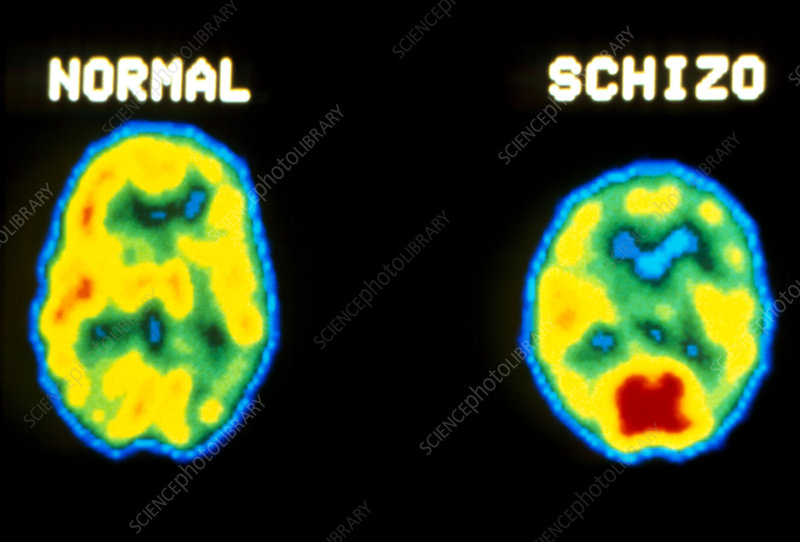Biochemical (dopamine hypothesis)
0.0(0)
Card Sorting
1/4
Earn XP
Description and Tags
Study Analytics
Name | Mastery | Learn | Test | Matching | Spaced |
|---|
No study sessions yet.
5 Terms
1
New cards
State the dopamine hypothesis
The dopamine hypothesis states that the brains of those with schizophrenia produce more dopamine than those without the disorder or have increased amounts of dopamine receptors that are linked to positive symptoms.
2
New cards
Explain the hypothesis
* Neurons that use the transmitter dopamine are thought either to fire too often, or to send too much information.
* It is thought that an excess of dopamine in particular brain regions can be related to certain symptoms.
* For example, such an increase in the Broca’s region (responsible for formation of language) can impair logical speech, a classic symptom of schizophrenia.
* It is thought that an excess of dopamine in particular brain regions can be related to certain symptoms.
* For example, such an increase in the Broca’s region (responsible for formation of language) can impair logical speech, a classic symptom of schizophrenia.
3
New cards
Explain the evidence that supports this study
* Evidence to support this theory comes from drug trials involving those with schizophrenia and those without the disorder.
* Drugs that increase dopamine levels (amphetamine and cocaine) are %%correlated%% with hallucinations and delusions.
* Patients with Parkinson’s disease are often treated with a synthetic form of dopamine called L-dopa. If their dosage is too high, it also creates symptoms in these individuals identical to those in people with schizophrenia, such as hallucinations.
* Post mortem studies, brain scans and autopsies have shown that schizophrenic patients have larger number of dopamine receptors than usual.
* ^^Wise et al. (1974)^^ found that brain fluid from deceased patients had abnormally low levels of the enzyme which breaks down dopamine, suggesting it may have been present in excessive quantities.
* Drugs that increase dopamine levels (amphetamine and cocaine) are %%correlated%% with hallucinations and delusions.
* Patients with Parkinson’s disease are often treated with a synthetic form of dopamine called L-dopa. If their dosage is too high, it also creates symptoms in these individuals identical to those in people with schizophrenia, such as hallucinations.
* Post mortem studies, brain scans and autopsies have shown that schizophrenic patients have larger number of dopamine receptors than usual.
* ^^Wise et al. (1974)^^ found that brain fluid from deceased patients had abnormally low levels of the enzyme which breaks down dopamine, suggesting it may have been present in excessive quantities.
4
New cards
Describe the Positron emission tomography (PET) scan
* Positron emission tomography (PET) scan analysis of dopamine usage indicates a greater number of receptors in the striatum, limbic system and cortex of the brain in those with schizophrenia than in those without.
* Excessive dopamine activity in these areas may be linked to positive symptoms.
* ^^Nestler, 1997^^ suggests that decreased dopamine activity in the prefrontal cortex of schizophrenia patients may correlate with negative symptoms such as flattened affect.
* Excessive dopamine activity in these areas may be linked to positive symptoms.
* ^^Nestler, 1997^^ suggests that decreased dopamine activity in the prefrontal cortex of schizophrenia patients may correlate with negative symptoms such as flattened affect.

5
New cards
Describe the issues and debates of this study
* Biological and biochemical explanations are considered %%reductionists%% as they attribute the cause of schizophrenia to a specific biological origin.
* For biological explanation, it is genes or gene combinations.
* For biochemical explanation, it is disruption of normal uptake of a specific neurotransmitter – dopamine.
* However, they do consider that environmental factors are important to the onset of the disorder.
* For biological explanation, it is genes or gene combinations.
* For biochemical explanation, it is disruption of normal uptake of a specific neurotransmitter – dopamine.
* However, they do consider that environmental factors are important to the onset of the disorder.